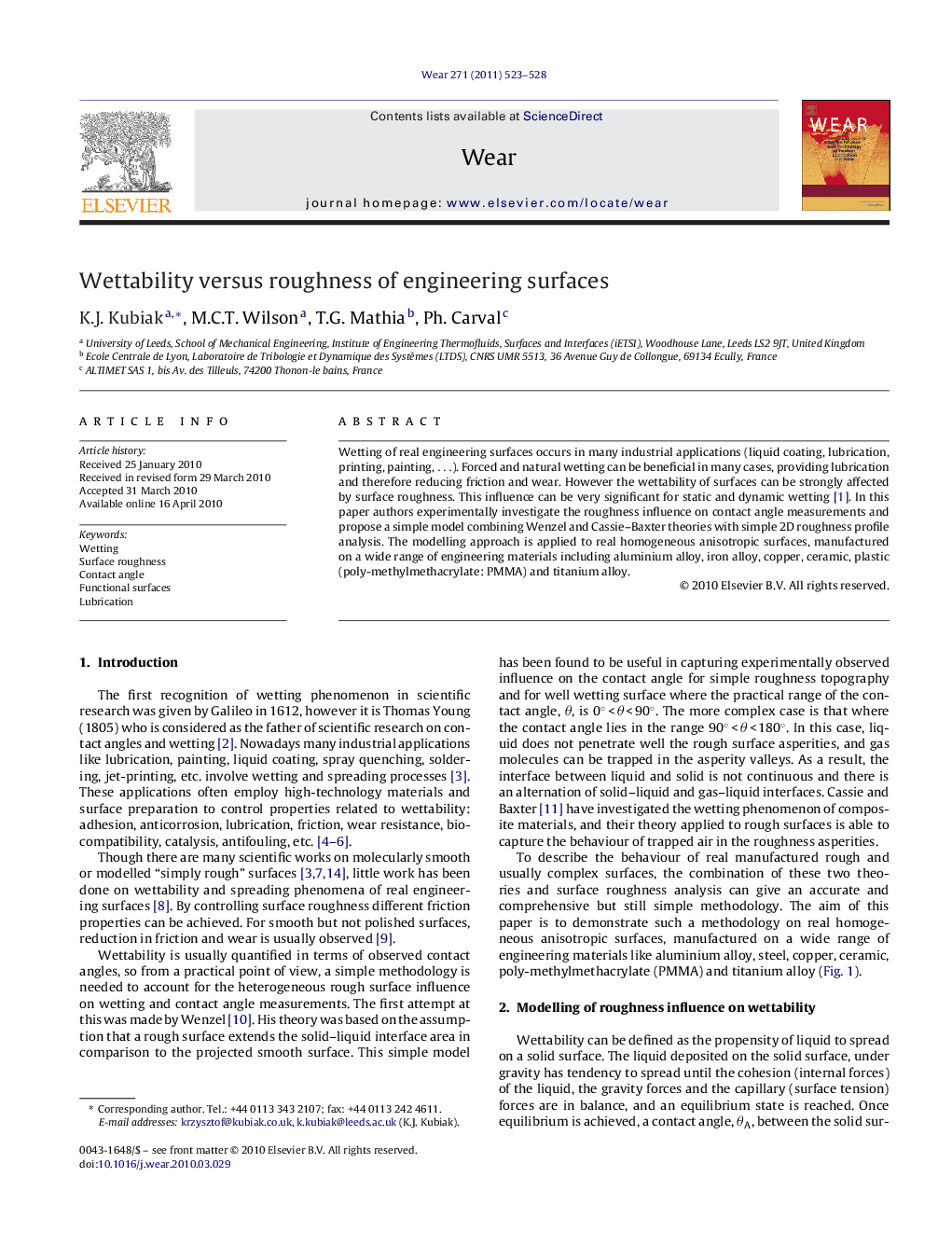| Article ID | Journal | Published Year | Pages | File Type |
|---|---|---|---|---|
| 618101 | Wear | 2011 | 6 Pages |
Abstract
Wetting of real engineering surfaces occurs in many industrial applications (liquid coating, lubrication, printing, painting, â¦). Forced and natural wetting can be beneficial in many cases, providing lubrication and therefore reducing friction and wear. However the wettability of surfaces can be strongly affected by surface roughness. This influence can be very significant for static and dynamic wetting [1]. In this paper authors experimentally investigate the roughness influence on contact angle measurements and propose a simple model combining Wenzel and Cassie-Baxter theories with simple 2D roughness profile analysis. The modelling approach is applied to real homogeneous anisotropic surfaces, manufactured on a wide range of engineering materials including aluminium alloy, iron alloy, copper, ceramic, plastic (poly-methylmethacrylate: PMMA) and titanium alloy.
Related Topics
Physical Sciences and Engineering
Chemical Engineering
Colloid and Surface Chemistry
Authors
K.J. Kubiak, M.C.T. Wilson, T.G. Mathia, Ph. Carval,
